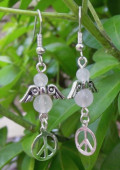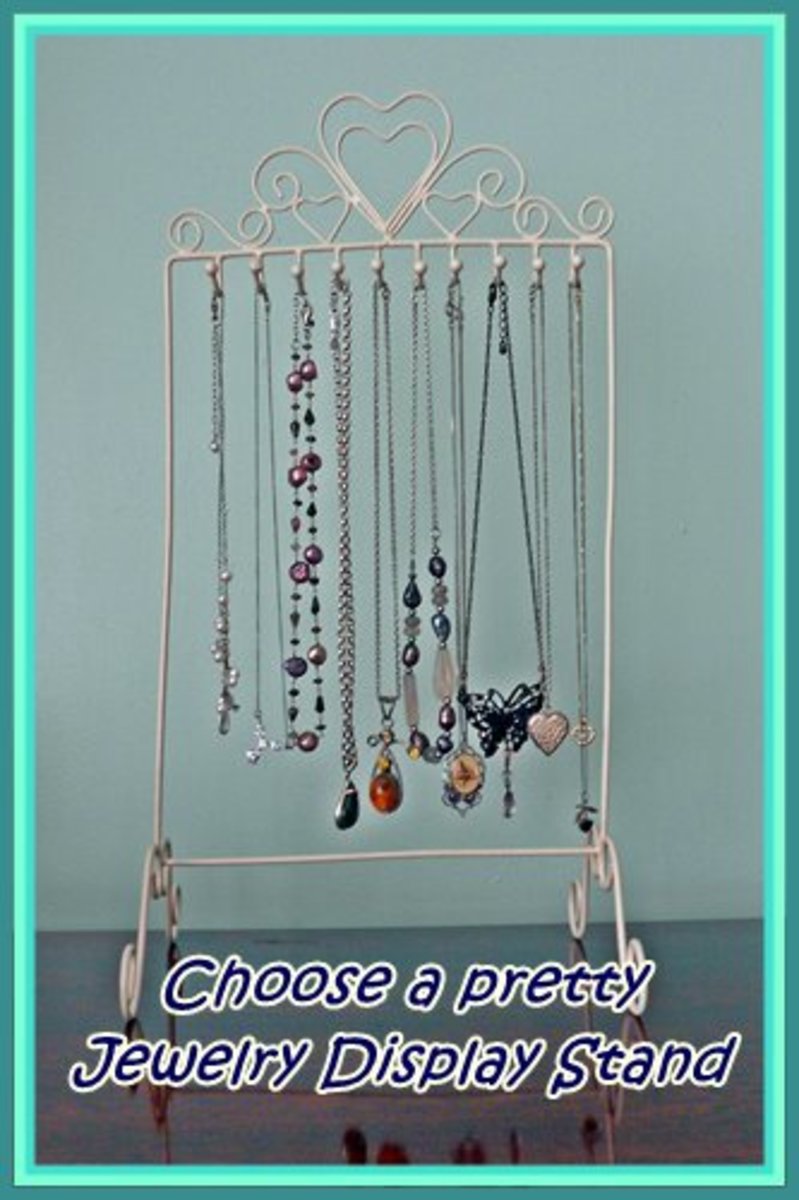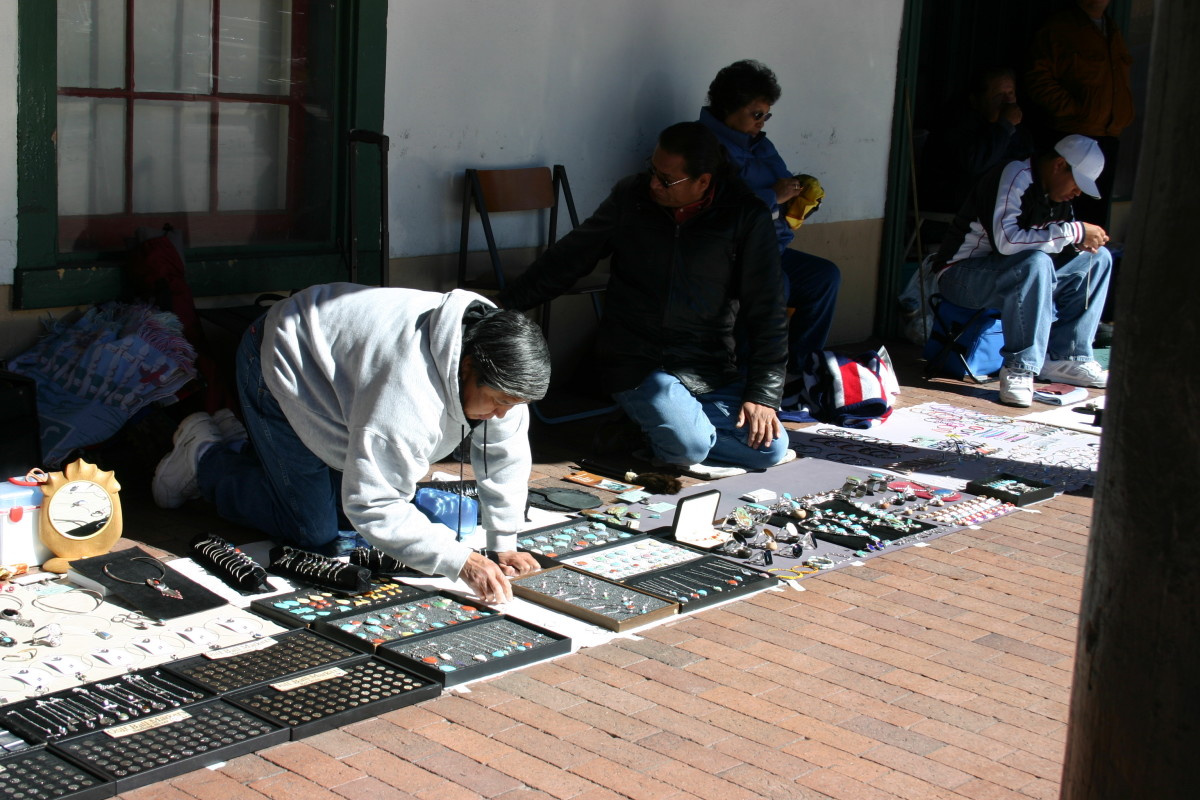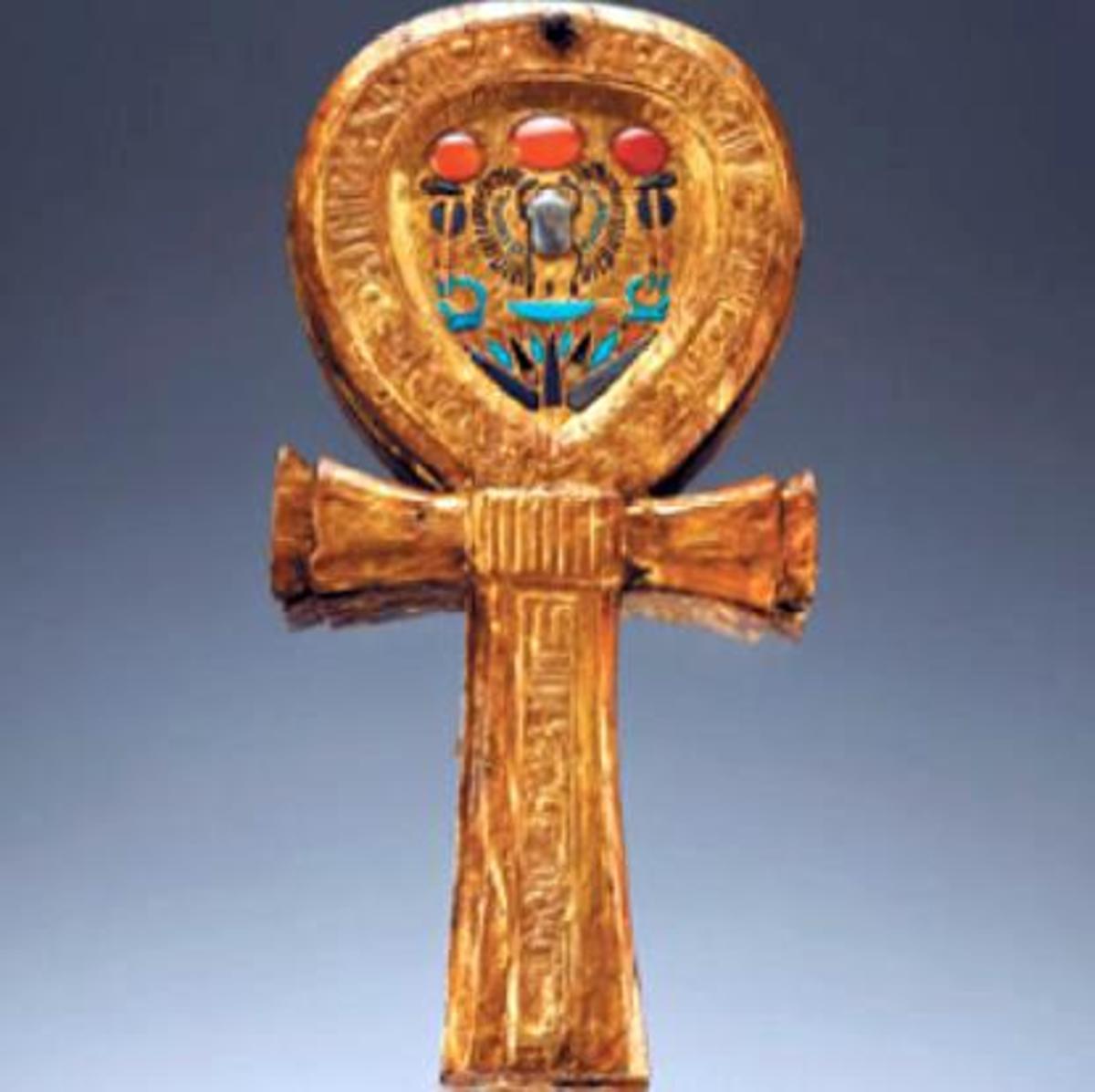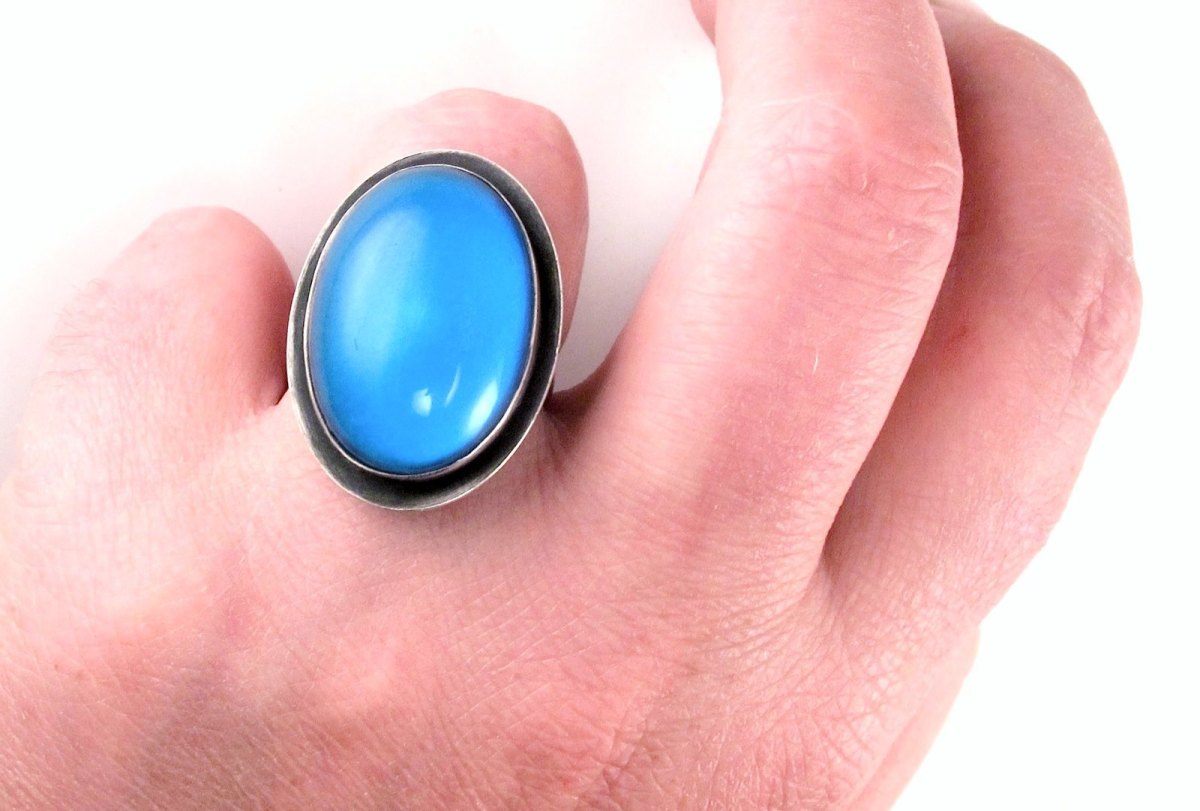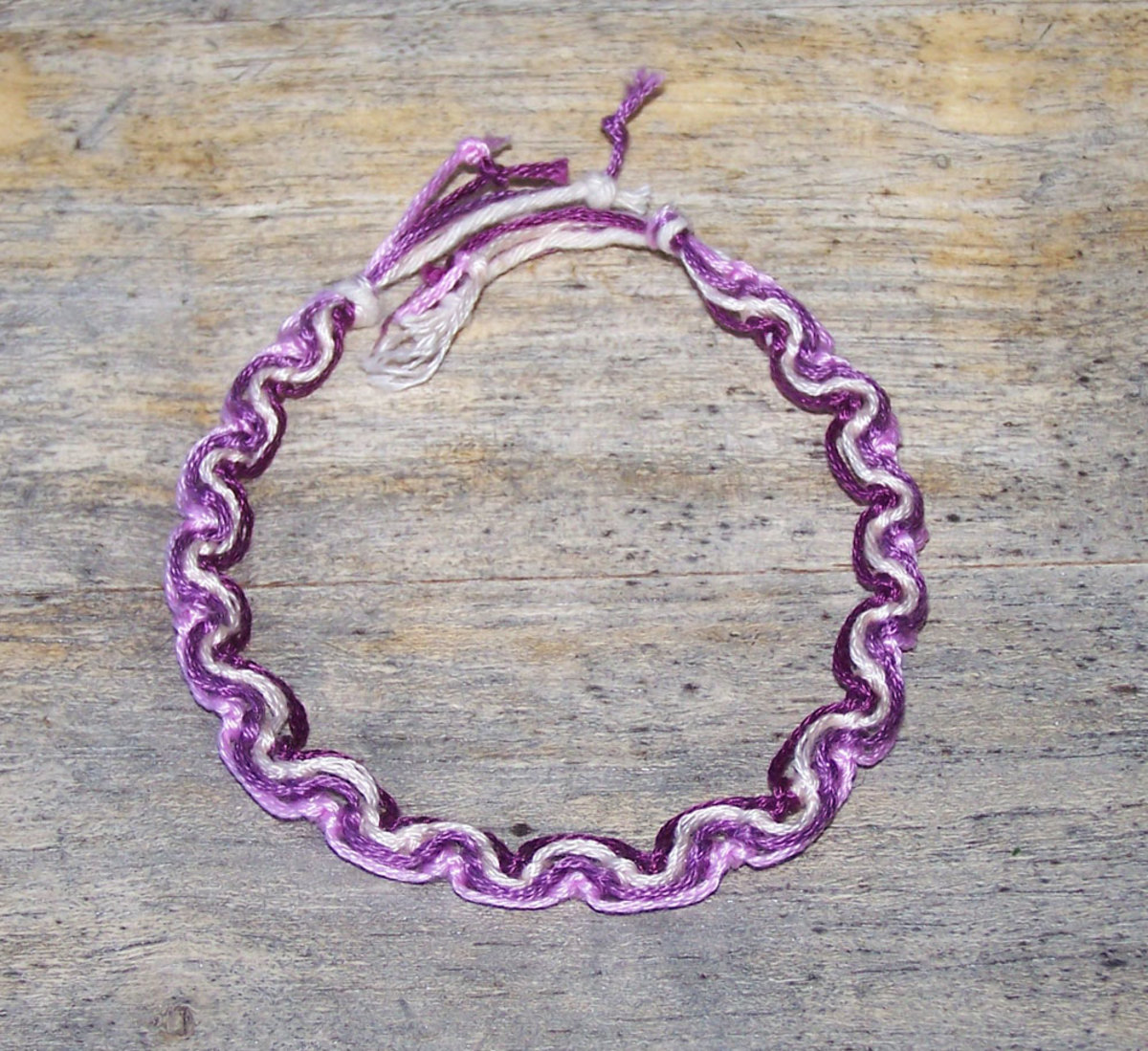Ethnic and Authentic Jewelry of India
Concept of jewelry from ancient times
The art of jewellery designing and love for jewellery goes back to the early man who used flowers and beads, carved wood, shell, bone and stone for decoration. This trend changed from stones to ivory, copper and semi-precious stones and then to silver, gold and precious stones. However even today some of our tribal folks use flower jewellery for decoration.
Jewellery is as old as Indian civilization itself. By 1,500 BC the population of the Indus Valley was creating moulds for metal and terracotta ornaments. Gold jewellery from these civilizations also consisted of bracelets, necklaces, bangles, ear ornaments, rings, head ornaments, brooches, waistband etc. In the sculptures of Bhutan, Sanchi and Amaravati and in the paintings at Ajanta, we can see a wide range of jewellery worn by men and women, by king and commoner. The temples of South India, Bengal, Orissa and Central India present a veritable cornucopia of the jeweller's art.
Greek visitors of ancient India marvelled at the elaborate Indian jewels of the time. The complex art of jewellery designing of yore is also mentioned in 19 centuries old epics like Ramayana, Mahabharata and Arthsastra. One of the ancient Tamil books, Silappadikaram also describes a society dealing with precious stones, gold and pearls. Domingos Paes, a Portuguese writer also tells about the glittering city of Vijaynagar with jewels in his text.
Jewellery like wearing precious stones, pearls, metals etc was not only a means of beautification but each stone signify a quality to protect against evil forces. Like Ruby is used for passion, protection and prosperity. It is mentioned in ancient literature and teachings that "navratnas" or nine gems are one of 6 pathways to remove negative karmic gaps and attain happiness and prosperity. The "maniratna", also called the serpent stone, was used as a talisman to protect the wearer.Rudraksha,Tulsi and sandalwood beads are worn even today during Hindu worship by devotees.
The advent of Mughal rule further embellished Indian jewellery. The mixture of Hindu and Muslim forms and patterns resulted in a great outburst of ornamentation, elegance, exquisite, and of a grand lavishness never seen before. Although traces of enamelling have been found in ancient Taxila, this art reached its elevation only under the Mughals, when even the unseen reverse side of each jewel was covered with complex enamel work (minakari).
Jewellery is later used as a type of investment or savings, like in a bank or share market today It is also used as a means of providing financial security to women who sold it in times of need.
In other words, we can say Indians love to acquire gold or jewellery not only for their interest but also to become rich. Indian love of jewellery is actually not about the accumulation of wealth in terms of gold but it has also reached new heights and perfection by experimenting with different stones, finishing patterns design and colours. It is reflected in these designs perfect symmetry, repetitions, orderly progression and use of antique and classical patterns.
With wide diversity in jewels along with perfectionism in different areas these jewels form a part of our precious heritage and are a kind of priceless art.
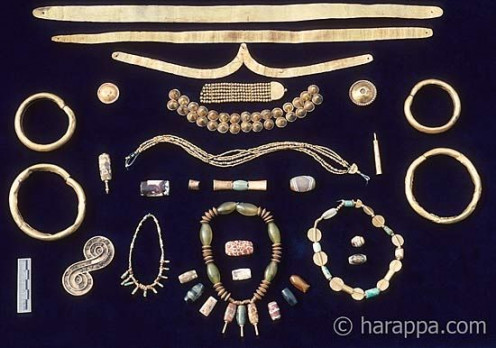
Gold Jewelry
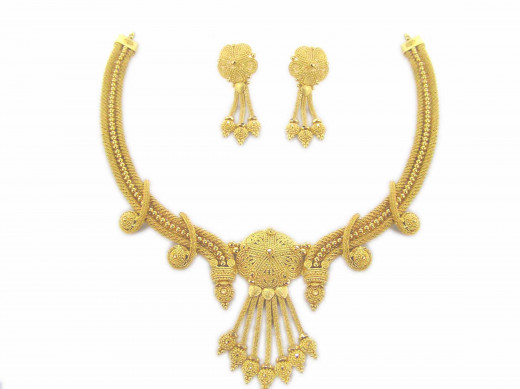
Kundan Jewelry
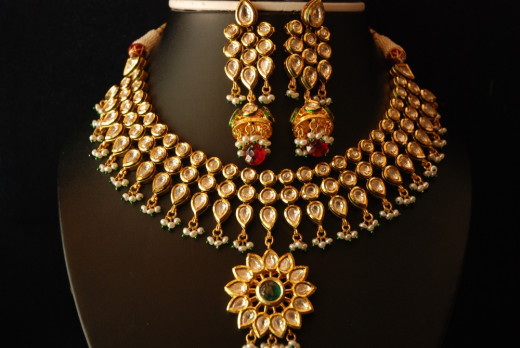
Pearl Jewelry
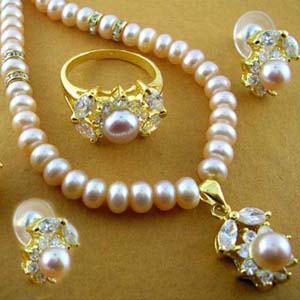
Different types of jewellery
The jewellery worn by Indians is of diverse variety. It can be classified on various basis:-
1) Types of jewellery based on material:-
- Antique
- Bead
- Bridal
- Copper
- Costume/Fashion
- Custom
- Filigree/Tarakshi
- Gold
- Glass
- handmade
- Ivory
- Jaddu
- Kundan
- Lac/lacquer
- Meenakari
- Navaratna
- Pacchi
- Pachchikam
- Pearl
- Platinum
- Silver/Oxidised
- Stone
- Temple
- Thewa
- Tribal
- Wooden
Different types of ornaments in Indian Jewellery
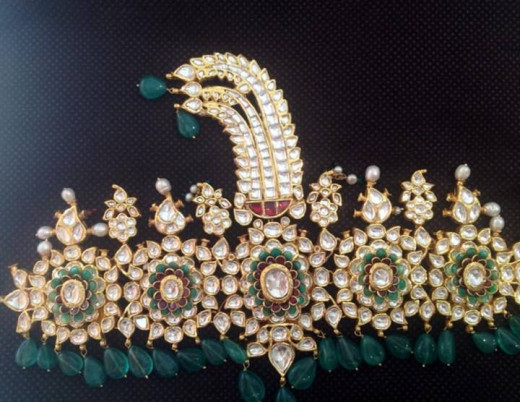
Sarpech
Sarpech also known as aigrette is a traditional ornament usually wore by nobles and kings in front of their turban. Sarpech can be divided into two parts:- Sar ( Meaning head or front) and pech( screw). So actually this jewel or ornament is screwed in front of turbans of noble men. It was commonly worn by Muslim as well as Hindu prince. It was later specially worn by Sikh.
Sarpech from Rajasthan is made of intact diamonds and long emerald drops. Detailed Jaipur enamel work covers the reverse of the ornament. In north India these are made of gold base with enameled gems in it. Sometimes all 9 talismic gems or “Navaratna” are embedded in gold base with technique of interlocking.
Apart from India this ornament was also worn by Persian nobles in their turban. They call it “jikka or jiqa” which means crest or tuft and in Turkey it was called as Sorguch In India, dominantly two kinds of turban ornaments exist: Sarpech and Kalgi (ornament).
Sarpech a head ornament is being used from medieval India during the times of Cholas, Pandyas. It signified honor and pride and was used on turban worn by prince(s). It was evolved in the era of Mughals and Rajputs. Mughal queens also wore this jewel in their turbans but still this ornament was predominantly used by male community.
It’s still used as kalgi in sikh marriages wore by the groom.
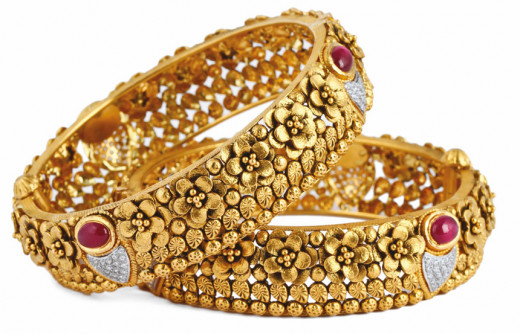
KADA :- Hand Ornament
Kada or in other word bangles have always been part of Indian jewelry from ancient period. It’s a hand ornament.Bangles and bracelets of different types were worn in the north such as the bangdi, churi, naugari, pahunchi, kangan, gaira, bartana, patri, dastband and kada.
Bangles have evolved from ancient period and are being part of traditional jewelry. It is usually worn as pair in both arms by women. It was also worn by men in traditional times. However nowadays very few men wear bangles. Instead most of them wear bracelet which is modified version of bangles. Earlier they were made of glass, however now plastic bangles are slowly replacing them. Still glass bangles are preferred by women in marriage and on auspicious occasions.
There are two categories of bangles
- Solid cylinder type: - It may be hollow or filled. It is doesn’t have open ends and cannot be extended or reduced.
- A split, cylindrical spring opening/closing type :- It has open ends. It can be reduced or extended as per size. The end may have artistic elephants or peacocks or parrots designed on them.
The material may vary from lac to glass to rubber to plastic. The goldsmith gives sthape to hot metal and then paints it once it cools down.
Significance:-. From simple plain colored glass bangles to embezzled artistic Kadas , these enhance beautification of women. Designed with bird or animal heads , these symbols are symbol of potent of the sun. The tinkling sound of bangles is the way of expressing women’s desire , anger , and need for attention.
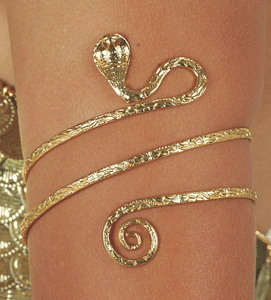
VANKI- Arm Ornament
Vanki also called "Bajuband" is an arm ornament wore by women as well as men in ancient India. It is still a prevalent ornament on the occasion of marriage.
Armlets initially was worn as part of adornment , since these beautify arms. These were worn by soldiers of ancient as well as medieval period as a war wear. These are also being worn by farmers. They form a part of groom’s jewelry during weddings.
Armlets are usually open ended and usually made of metals like gold, iron or copper and are more or less oxidized in fashion. They are carved in variety of shapes like many ended with snake or crocodiles. The shape of the Vanki or Bjuband is such that if fits over the arm without any strain or pressure.
It also being worn by modern Indian women in their marriages.
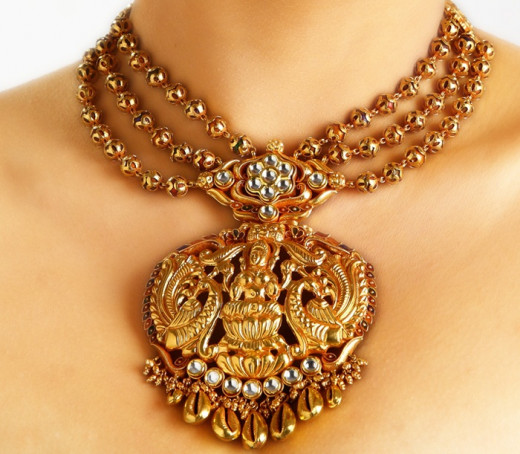
LINGA PADAKKA MUTHU MALAI or Necklace
Necklace is an article of jewelry wore by women or men around neck as a part of adornment and social status.
Art of making and wearing necklaces date back to stone age about 40,000 years ago. The oldest necklaces were weaved with animal muscle as a string which was collected while hunting. It was decorated with animal teeth, shells, bones, feathers, wood, seed, leaves and colorful skin of prey animals.
Various types of necklaces are made depending on availability of raw material. Like pearl necklaces, and pearl pendants are part of medieval courts of Vijayanagar and Thanjavur. Pearl jewelry has always been famous in south India especially Hyderabad.
Sometimes these necklaces are also worn to fight evil spirit and negative thoughts. A pendant called “Tabeez” is worn by Muslims and Sufis along with black thread around their neck. In few cases a scroll of sacred words is enclosed within a pendant to fight evil spirits and negative energies. Often pendants in shaped as God or Goddesses are worn in necklace around neck
Necklaces are classified as Choker,Princess necklace,Matinee necklace,Opera necklace,Rope necklace, Lariat necklace as per length
They are further divided as Cross necklace,Diamond necklace,Pearl necklace,Tooth pendant necklace, Prayer bead necklace, Rivière Necklace as per adornment
Significance:-
As stated earlier necklace with pendants having sacred scroll fight off evil energies. Necklaces made of stones like ruby or sapphire etc are being worn for good luck. Necklaces are also used for as a protection against any attempt at hypnotizing. For hypnotizing,hyptonizer has to continuously look at wearer gaze, however this attempt is failed by necklace. In this manner, necklace acted as a powerful restraint against undesirable gentlemen trying out their charms on virtuous maidens.
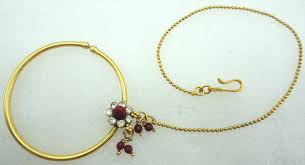
NATH :- Nose Ornament
Nath is a nose ornament is wore by women across India. It is especially worn by women on their wedding day in South Asia. It is round in size just like a ring and can vary in size. It is embedded with various pearls, stones and gems. It is attached with a chain which is tied to side of head with hair pins. It is also called “Koki”. If the size is big , it hangs around nose over lips of wearer.
Although usually nose ornaments are of round shape. There are other varieties too.There are the single stone and the clove-shaped Laung worn on one side of the nose, the jewel worn through the cartilage in the centre of the nose. The most exquisite nose ornament is worn by women of Maharashtra. It is oval shaped with pearls embedded in it. End of nose ornament is decorated with a ruby or emerald.
It’s not mentioned in ancient literature. It must have been brought by Mughals in 9th or 10th century A.D.
Significance:- It forms integral part of Indian bridal jewelry. It is most important ornament as it’s perhaps most seductive and women adorn themselves after wearing it.
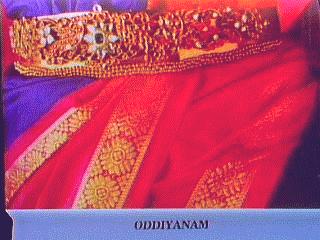
ODDIYANAM :- Waist Ornament
Its a hip ornament popular among women of India. Although the purpose of the Oddiyanam was supposedly to hold up the saree, actually, like the binding of feet in the Far East, it served the additional purpose of keeping the waist slim, as the breath was drawn in before the belt-clasp was fastened. The slim waists of older women even after several childbirths was believed to be the result of the use of this ornament.
The tight belt around the waist further accentuated the hips of the wearer as, in Dravidian culture, large hips were a sign of beauty in a woman. Examples of pinched waists and heavy hips can be seen in sculptures in the temples of the South to this day.
Waistbeads are an age old African tradition and are worn for vast reasons and purposes to celebrate femininity, fertility, healing, spirituality, power, balancing, attracting and keeping a mate, rites of passage, rejuvenation, initiations, first menses, energy, body shaping, to promote good blood circulation, sexual enhancers, and protection amongst other things.
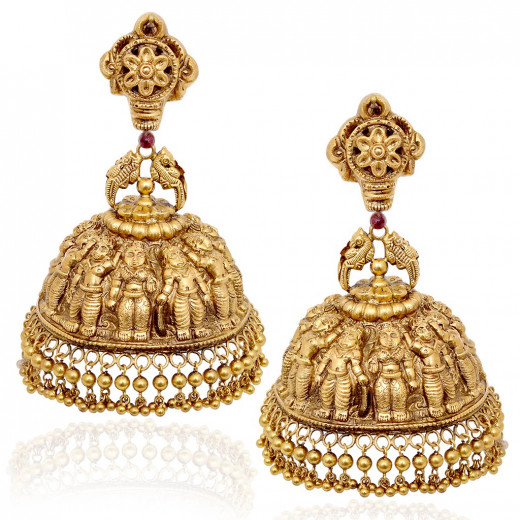
KARANPHOOL JHUMKA:- Ear Ornament
In olden times, to make room for more ornaments, the ear was pierced in four places -- the lobe, the inner ear, the outer part of the middle of the ear and the top of the ear.
The most popular jewel for the ear in the north has been the Karanphool, with the flower motif in the centre of the ornament. The Jhumka in the shape of a bell has also been separately worn. It was only during the Moghul period, however, that the Karanphool Jhumka evolved as a single jewel for the ear, each region having its own special embellishment added to the basic design.
Jhumkas or Jumkis are striking very large size chandelier earrings in circular or conical dome/ bell shape.The Jumkas are designed in the form of a bell with a large golden drop found inside the outer cupola. Jhumkas end in lace like row of tiny golden droplets.Jumkas may have either semi precious gemstones beads or fine gold tassels dangling from the end.
Different types of Jhumkas are gold, south Indian, minakari, hoop, crystal, pearl, kashmiri jhumkas.
Significance:-According to legend, evil spirits were thought to be able to enter the body through any of its openings and take control. By appending ornaments to almost every part of the ear, the woman also ensured a continuous state of mental and physical well being. Indeed recent studies have identified the ear as a microcosm of the entire body – “the point of vision in acupuncture is situated in the center of the lobe.”
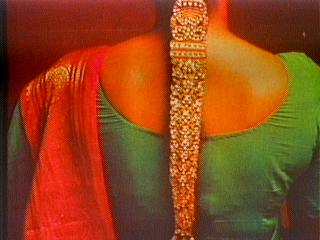
JADANAGAM :- Hair Ornament
The Jadanagam of South India, or, literally, the hair-serpent, is worn by brides to decorate braided hair. The rakkadi at the back of the head in the shape of the sun, symbolic of brilliance and power, is followed by the crescent moon, evocative of calm and peace. The third piece is the fragrant thazhambu flower (screwpine).
Then comes the ruby and diamond-studded many-headed divine cobra, Ananta, below whom are seen three rows of the cobra's coils. From here the jewellery for the braided hair starts. Designed in the form of flowers and buds, it consists of separate pieces interlaced to form a supple ornament. Towards the end of the braid it bursts out into 3 silk tassels held together by encrusted bells.
This bridal jewel was also adopted by Devadasis, or temple dancers, who considered themselves the brides of the temple deity. This tradition has continued to this day when we see Bharat Natyam dancers wearing the Jadanagam or, where it is not available, a substitute woven out of flowers.
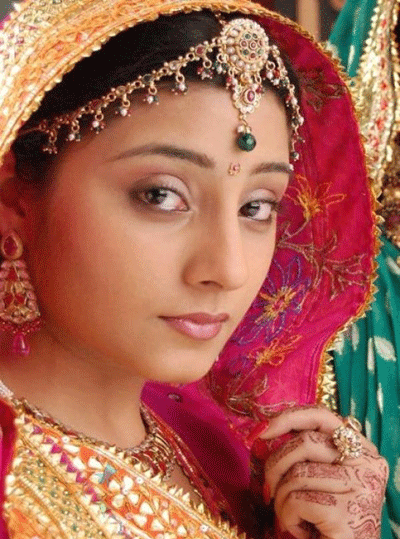
SHINKA:- Hair or forehead ornament
It also one of the traditional ornament worn by women of India. It was usually worn by wives of nobles, kings and Princesses
This ancient Shinka from Gujarat has peacocks linked by a series of heavy gold chains. The peacock, a symbol of beauty and grace, is here shown encrusted with sapphires, emeralds and rubies. Turquoise stones are set in the central pieces. Little golden bells, with clusters of pearls hanging from them, enhance the beauty of the jewel.
The Shinka is an unusual hair jewel of Gujarat. Although popular with certain communities, it is quite rare, the more common hair jewel being the Damani worn on the brow in front of the hair-line.The Shinka, however, is worn on the hair itself and, as it is a heavy ornament, it is held in place by the unusual method of gold hooks attached to the hair. At weddings and on festive occasions the newly-married daughters-in-law of the family wear it.
Another form of hair ornament is "Mang Tikka". The Maang Tikka is an integral part of an Indian bride’s ensemble. It is essentially a piece of jewelry that has a hanging ornament at one end and a hair pin at the other. The pin is attached to the hair in such a way that the ornament dangles at the hairline of the woman. This age-old bridal accessory enhances the overall look of the bride and gives her a glamorous yet classy appeal, which sets her apart from the rest. Although, the maang tikka is generally worn by brides, it can also be worn by women of all ages for any special occasion that requires splendor and touch of regalia. This accessory can be worn with middle parting or any other hairdo.
Significance:-The tika is a composite ornament composed of a chain with a hook at one end and a pendant at the other. The hook holds the tika at the hair end, while the pendant falls on the exact center of the forehead. This place is believed to house the ‘ajna’ (agya to be precise) chakra. This chakra stands for preservation. Significantly, this chakra is visualized as having two petals, and its presiding deity is Ardhanarishvara, the half-male, half-female androgyne. This represents the ultimate union where no dualities exist. In tantric terms, this signifies the union of the male and female elements in nature, at all levels, including the physical
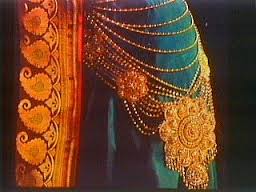
CHANDRAHAAR :- Hip ornament
This unusual ornament from Bengal, the Chandrahaar (meaning a garland of moons), comprises of a series of chains made up of minute gold balls held in criss-cross gold wire, leading down to an elaborate filigree pendant with a floral motif. The clasps on either side are, again, smaller filigreed flowers.
Bengal has always been famous for its unique gold jewellery with its delicate work and gold filigree which achieve great heights of perfection.
The Chandrahaar is a hip ornament adding grace to the wearer. It is believed that it was worn by Sita, of the epic Ramayana, at her wedding, and has excited the imagination of poets. Sculptors have carved elaborate versions of this jewel on figures in the temples of Orissa.
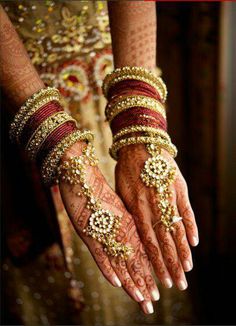
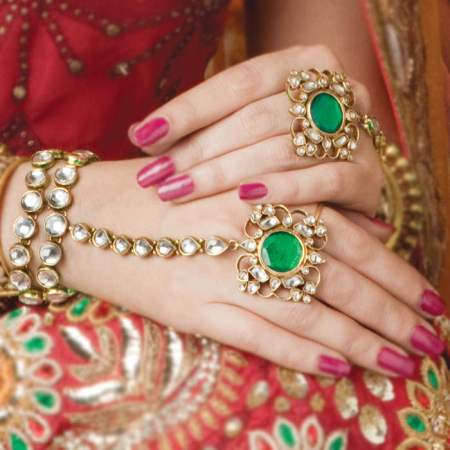
HATHPHOOL :- Hand Ornament
Hath Phool is some times called as Panchangala (or jewel for the five fingers). It covers entire hand with thin kundan chains and stones. It is worn at back of palm. This hand ornament basically originates in Rajisthan.
This Hathpool (or flowers for the hand), also sometimes called the Panchangala (or jewel for the five fingers), is from Rajasthan. It consists of a Kundan-set flower-encrusted bracelet with stone-set chains leading to another flower on the back of the palm and similar chains connecting it to the five rings on the five fingers, each ring with a different flower motif. The reverse of the jewel is covered with enamel designs. On the left thumb is an arsi or mirror, for last-minute preening by the wearer!
The setting of stones known as Kundan is achieved by little pits being carved out in the front of the ornament of the size of the stones being used. Precious stones are set in these hollows and kept in place by a band of the purest gold.
The reverse of this ornament is covered with intricate enamelling of different colours.
The hands of the wearer are decorated with mehendi or henna designs, an essential decoration for a bride of the north, itself a work of art.
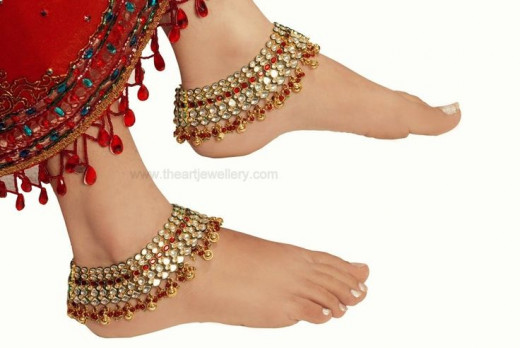
PAIZEB :- Foot Ornament
The Payal or Pajeb or anklets have been worn from time immemorial and are shown in the sculptures of ancient temples like the sacred center of Hampi. It is an integral part of every Indian girl’s jewelry box, and is typically the first piece of jewelry that the family gifts to new born girls to be worn in the feet even before she is able to walk. Indeed the melodious sound coming from the beats of payals mixed with giggling of the Luxmi of the family (Luxmi = goddess of wealth and prosperity-as a daughter is called) makes parents beam with pride and joy.
The origin of the anklet dates back to the Mesopotamian era. Anklets originated in the ancient times in Egyptian, Indian and Arab cultures. During those times, women belonging to the royal class wore it as a symbol of their wealth and status. These were popularly worn as a fashion statement in American culture, once introduced there. In Arab countries on the other hand, where the purdah system was prevalent, anklets were worn by women to let people know about their arrival in the surroundings. Ghoonghru was the basic part of a dancers’ ensemble, in several dance forms across these very regions. However, as a practice, it was not considered good for the women from the higher class of society. Hence, Payal or Paizeb was introduced as smaller, lighter and simpler ankle piece.
As the name implies, it is an adornment for the feet. Loose chain links between the uncut diamonds set in gold in Kundan settings, make the anklet lie flat on the foot fitting closely over the ankle. There are stone drops on the lower edge of the Paizeb in place of tinkling bells.
In the Kundan art of setting stones, even gems of little value achieve a rich effect by skilful incrustations.
The feet of the wearer are covered with mehendi or henna designs, as part of bridal decor.
A wide variety of anklets were worn in the different parts of India. The payal, gajra, sankla, chanjar, zanjiri, golusu and kaappu are some examples.
Most anklets of Hindu women were, however, made of silver, as gold was considered a sacred metal, not to be worn on the feet except as a decoration for icons in temples, or by royalty.
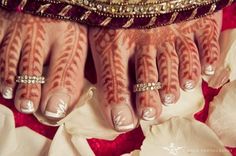
Toe Ring :- Toe(s) ornament
Toe ring also called “Bichiya” is a traditional Indian ornament which worn by only married woman in India. It is normally worn on second tow of either both foot as a pair. It is however worn on 3rd and 4th toe rings as well.
Significance:- After marriage pressures and changes can affect women’s menstruation cycle.This ornament help in maintaining women period cycle and also help in conceiving process.
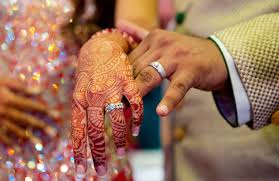
Ring:- Finger(s) ornament
Ring is the most important ornament worn by with men as well as women. It’s a must tradition in all kinds of marriages especially Christen ones. It is worn on ring fingers. Nerves of ring fingers are directly connected with heart.
Significance:-It’s a symbol of connection of hearts and souls of two groom and bride when couple exchange ring with each other.
An Indian Bride wearing all ornaments
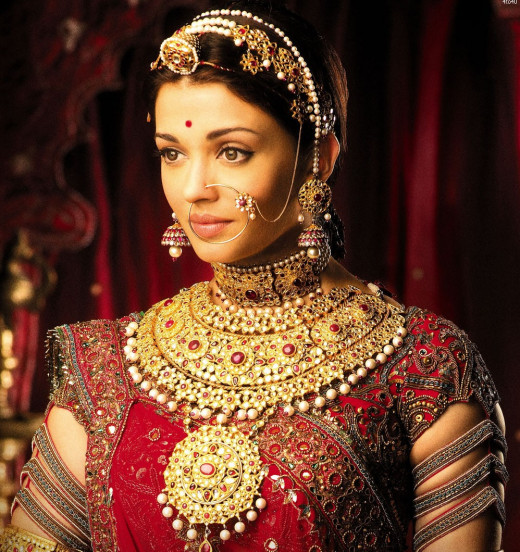
© 2015 Shuchi12


